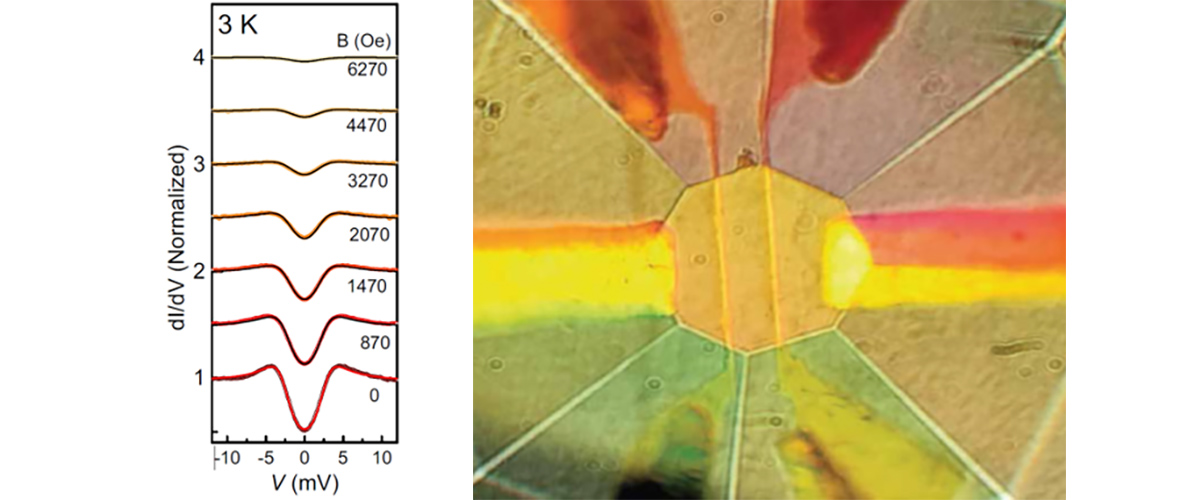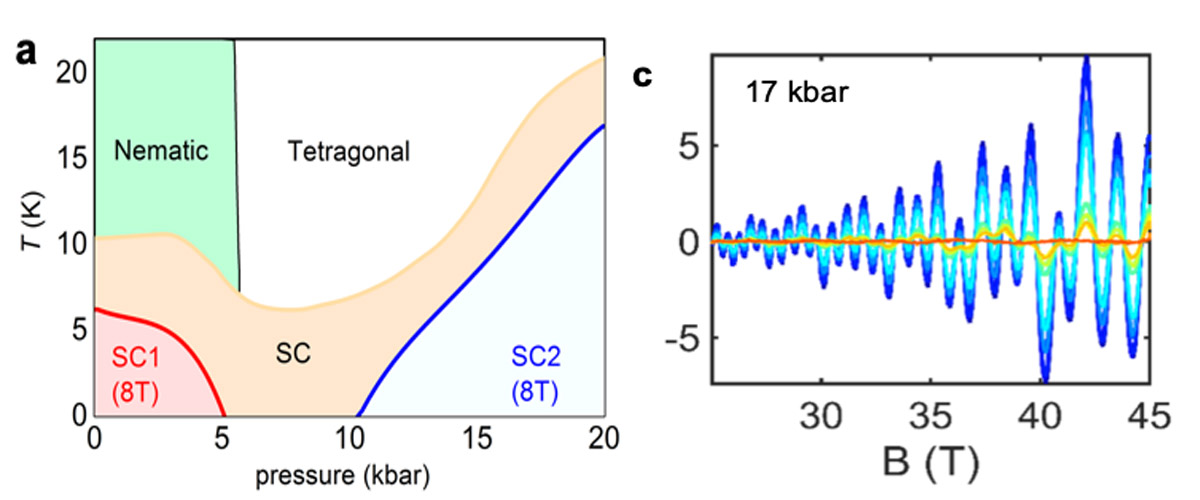What did scientists discover?
Scientists from the Max-Planck Institute and the National High Magnetic Field Laboratory made an exciting discovery by using a technique called tunneling spectroscopy under extremely high pressures for the very first time. They measured how certain materials – in this case Elemental sulfur - become superconductors, meaning they allow electricity to flow without resistance. By cooling the materials under pressure, they observed the exact energy levels at which electrical resistance disappeared, showing the transition to a superconducting state. (Fig. 1).
Why is this important?
This discovery is important because many materials show improved superconducting properties, like working at higher temperatures and in stronger magnetic fields, when exposed to high pressure. Some materials, like hydrides, which hold the record for the highest superconducting temperatures, only become superconductors under extremely high pressure (over 1 million times atmospheric pressure). This study gives scientists a way to explore these materials´ properties in detail for the first time, helping to design better superconductors in the future.
Who did the research?
F. Du1, F. F. Balakirev2, V. S. Minkov1, G. A. Smith2, B. Maiorov2, P. P. Kong1, A. P. Drozdov1, and M. I. Eremets1
1 Max Planck Institute for Chemistry, Mainz; 2National MagnLab, Los Alamos National Laboratory, Los Alamos
Why did they need the MagLab?
Scientists at the MagLab created new tools and methods to study superconductors under much higher pressures than ever before—up to 1.6 million atmospheres, compared to the previous limit of 3,000 atmospheres. This breakthrough brings research closer to pressures found near the Earth's core, pushing the boundaries of superconducting research in extreme conditions..
Details for scientists
- View or download the expert-level Science Highlight, Bringing Tunneling Spectroscopy to new Extremes: Revealing Superconducting Symmetries in Sulfur at Ultra High Pressures
- Read the full-length publication, Tunneling Spectroscopy at Megabar Pressures: Determination of the Superconducting Gap in Sulfur, in Physical Review Letters
Funding
This research was funded by the following grants:K.M. Amm (NSF DMR-2128556); F.F. Balakirev (LANL 20220299ER)
For more information, contact Neil Harrison.





